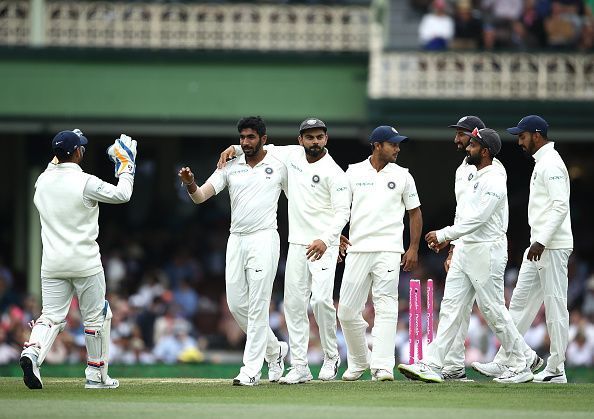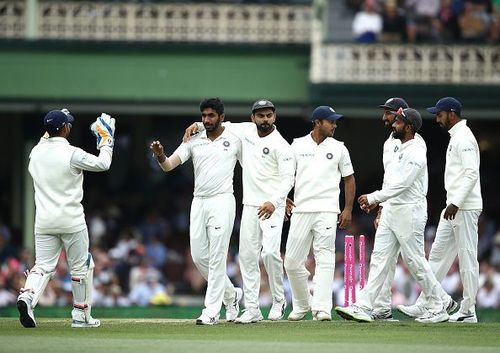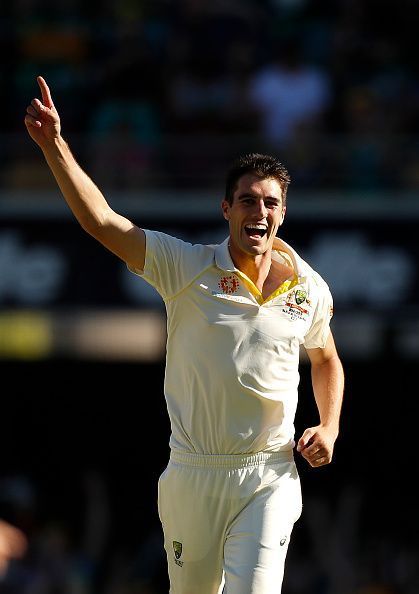
The Hard Truth: India taught Australian Bowlers a very harsh lesson
Thus far, the Australian bowling group has seemingly escaped criticism.
Throughout 2018, the national side's dramatic batting collapses had captured the imagination of cricket critics.
After India's recent four-match Test series in Australia, it can no longer be ignored.

India achieved an emphatic 2-1 victory over the hosts. The final scoreline flattered the Australians - after the Boxing Day Test at the MCG, it became blatantly clear that Australia's batsmen were not the only members of the side to perform well below expectations.
The Indian bowling group looked well balanced - not only on paper, but in the flesh. Ishant Sharma continued to trouble all comers. His splice-hitting and deceptive swing into the right-handed batsmen was a joy to watch. His ability to take it away from the left-handers, even when bowling around the wicket, was nothing short of impressive.
Even in trying conditions, Ravi Ashwin and Ravindra Jadeja were always threatening. Kuldeep Yadav was a lively addition in the final match of the series.
But it was two other quicks who stole the show.
It was in this series that young Jasprit Bumrah announced himself to the world. He had enjoyed an excellent 2018 up until the tour to Australia, but his ability to perform in Australian conditions - often a cemetery for foreign bowlers - was remarkable. The deceptively quick Mohammed Shami was equally impressive. His standout moment was in Perth, where a hostile spell netted him figures of 6/56.
India has a seriously good bowling attack. With a mix of swing, seam movement, sheer pace and aggressive intent, batsmen around the world will quickly realise that when playing against India, there is not an easy run to be found.

If the Indian bowling attack showed its adaptability and flair, the Australian quartet continued what had been a lackluster 2018. In fact, a 2018 that was, quite simply, not good enough.
At this stage, the Australians' reputation exceeds their output. The opposite can be said of the Indians, who are deserving of much higher praise than many pundits accord to them.
The numbers support this.
Of the Australian bowling quartet - Mitchell Starc, Josh Hazlewood, Pat Cummins, and Nathan Lyon - only the 'workhorse', Pat Cummins, performed to a standard that wins Test matches.
Cummins performed admirably. Arguably, he should be leading the fast-bowling attack. For the series, he nabbed 14 wickets at an average of 27.78. His strike rate was the best of the Australians, taking a wicket every 62.1 balls.
Nathan Lyon led the Australian wicket-taking tally, taking 21 wickets. This is a feat to be proud of. However, this does not tell the full story. These 21 wickets were taken at an average of 30.42 and a strike rate of 69.1.
Lyon's average for the series was worse than all of India's front-line bowlers, with the exception of Umesh Yadav (69.5), whose sole outing in Perth did him no favours for further selection.
Lyon's strike rate of 69.1 was equally underwhelming, yet marginally better than those of the two Indian spinners (Ashwin and Jadeja, 76.2 and 86.8 respectively).
Josh Hazlewood, the team's 'metronome' also performed well below expectations. He snared 14 wickets at an average of 30.61, with a strike rate of 70.2
Renowned for his quick and fiery spells, Mitchell Starc seemed bland.
The left-armer struggled to find his radar, and accordingly was among the worst performers of the Australian bowling unit. He managed to take 13 scalps at an average of 34.53. Those scalps fell at an average interval of one every 64 balls.
Compare this to the Indian bowlers, who often go under-appreciated outside of their homeland:
- Jasprit Bumrah (4 matches): 21 wickets at an average of 17. His strike rate was 44.9.
- Mohammed Shami (4 matches): 16 wickets at an average of 26.18. His strike rate was 51.2.
- Ishant Sharma (3 matches): 11 wickets at an average of 23.81. His strike rate was 56.1.
- Ravindra Jadeja (2 matches): 7 wickets at an average of 28.57. His strike rate was 76.2.
- Ravi Ashwin (1 match): 6 wickets at an average of 24.83. His strike rate was 86.8.
- Kuldeep Yadav (1 match): 5 wickets at an average of 19.80. His strike rate was an impressive 38.2.
Australia's bowling woes did not spring up overnight during the Border-Gavaskar Trophy. Neither did India's fortunes arise at the same time.
Throughout the whole of 2018, the much vaunted Australian attack did not impact matches enough, whilst the Indian bowling unit continued to knit together strong performances.
Nathan Lyon took a whopping 49 wickets for the 2018 calendar year. It is worth noting that these came at an average of 34.02 and a strike rate of over 75. Yasir Shah, Ravi Ashwin, and even Keshav Maharaj churned out better bowling averages and strike rates.
Often seen as the spearhead of the attack, Mitchell Starc managed 31 wickets at an average of 33.35. His strike rate was 62 for the year. Josh Hazlewood's year yielded only 26 wickets at an average of 33.26 and a strike rate of 73.2.
It was not just Rabada, Bumrah, Shami and Anderson who outperformed these two. Sharma, Abbas, Gabriel, Perera, Broad, Holder, Lakmal, etc. all have far more impressive figures to their names. The list goes on.
Pat Cummins' record for the 2018 calendar year is the only one that can withstand scrutiny. He sat sixth on the total wickets tally, with 44 wickets at a wonderful average of 19.97, and a strike rate up there with the best, at one wicket every 42.8 balls.
India possesses a bright future. With a bowling attack that will continually trouble their opposition in all conditions, one can look forward to watching them win many more matches together.
But, if India's bowlers are damaging batting lineups all across the world, then the opposite can be said for Australia. With the exception of Pat Cummins, the high appraisal for the Australian bowling quartet is unwarranted.
Many questions remain.
With the bowling unit failing to fire, will the opportunity come for Chris Tremain, Scott Boland, and other Sheffield Shield performers? Moreover, will they take it and perform?
Perhaps the recent inclusion of Jhye Richardson in the First Test against Sri Lanka is a transitional step to this end. Hazlewood did not play, whilst Lyon and Starc under-performed. In line with the trend of 2018, it was Pat Cummins - aided by the newcomer in Richardson - who did the damage to the Sri Lankans.
One thing is for certain. The return of Steve Smith and David Warner will not return the fire to Australia's bowling lineup, nor will their batting solve all of the national side's woes.